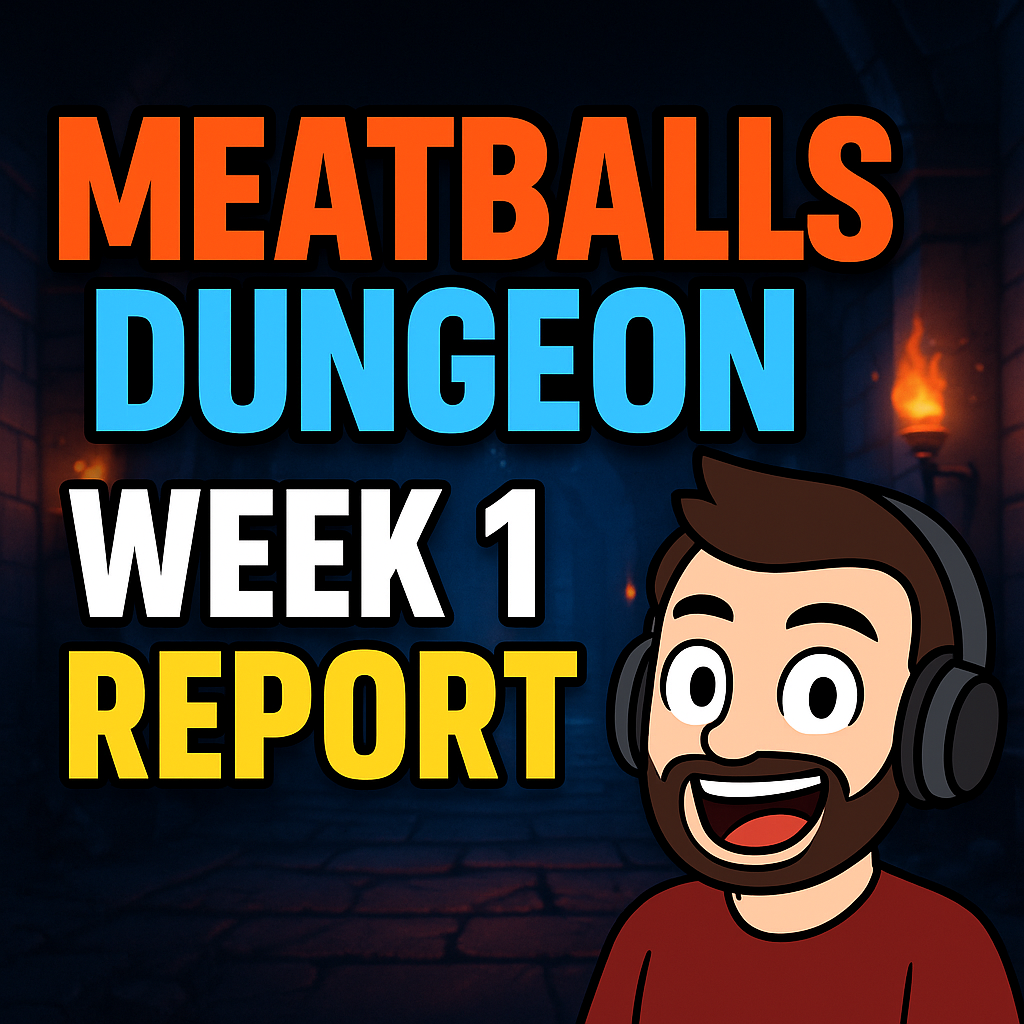Introduction: The Hidden War Beneath Our Feet
Water is life. In 2025, it’s becoming power.
While wildfires burn and reservoirs dry across the American West, something more insidious is happening underground. Deep beneath the surface, America’s last viable aquifers — ancient, fossil-like underground lakes — are quietly being sold off. Not to farmers. Not to communities. But to hedge funds, private equity firms, and a handful of billionaire investors betting on one truth: in the near future, clean water will be more valuable than oil.
Welcome to the great American water grab, where investment portfolios are now built not on tech or crypto, but on access to what’s left of the nation’s groundwater.
Section 1: Drought Is the New Normal
Across the Southwest, the data is undeniable:
- Lake Mead and Lake Powell, fed by the Colorado River, are at historic lows, with power production already affected at the Hoover Dam.
- The Ogallala Aquifer, one of the world’s largest, is losing water faster than it can recharge — some areas have dropped over 150 feet.
- California’s Central Valley is in its fourth decade of aquifer decline, even as farmland expands.
What once felt like a slow-motion disaster is now fast-forwarding.
Fresno, California recently approved emergency measures allowing farmers to drill even deeper wells — many now boring past 2,000 feet. But drilling is expensive. And when water becomes unaffordable, land becomes worthless. That’s when new buyers swoop in.
Section 2: The New Water Barons
They don’t make headlines. They don’t wear cowboy hats. But they control more of America’s groundwater than ever before.
Who’s Buying?
- BlackRock and Vanguard have quietly acquired farmland portfolios with attached water rights.
- TIAA-CREF, through Nuveen, owns over 100,000 acres of U.S. farmland with deep well access.
- Billionaire Bill Gates, already the largest private owner of farmland in America, holds significant parcels with water-rich soil across Arkansas and Nebraska.
- Water Asset Management LLC (WAM), a shadowy hedge fund based in New York, has been buying rights in Arizona, Colorado, and California since the 2000s.
These investors are not interested in farming. They’re interested in control. Control over who gets water and who doesn’t.
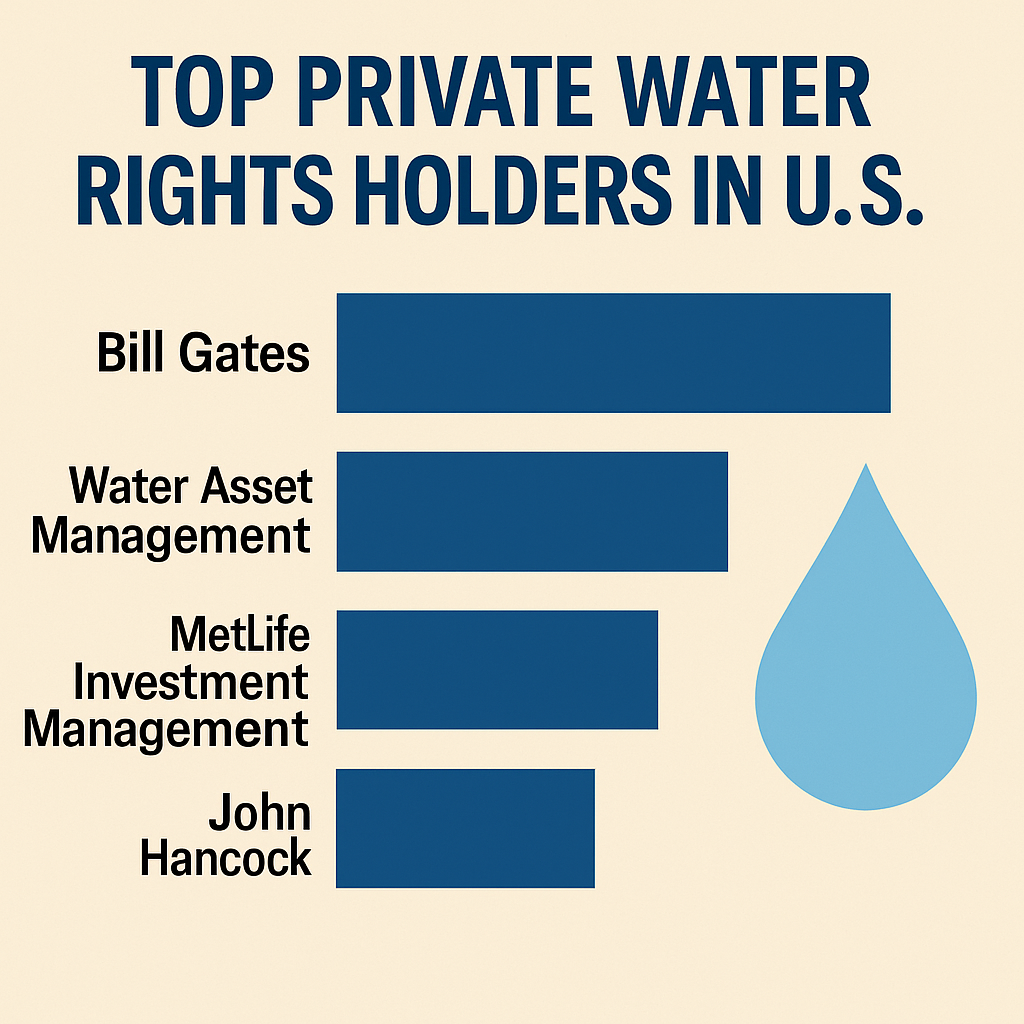
Section 3: The Loopholes That Made It Possible
America’s water laws are an archaic patchwork. In many states, groundwater rights are tied to land ownership. That means if you buy the land, you own the water beneath it — even if it crosses into another community’s aquifer.
Some states like Texas and Arizona operate under the “Rule of Capture,” where landowners can pump as much water as they want without regard for neighbors or sustainability.
This has created a legal gray market, where water futures are traded, rights are separated from land, and deep-pocketed buyers accumulate access to the last clean reserves in the name of “investment diversification.”
Section 4: Water Arbitrage and the Urban-Farm Divide
In California’s Central Valley, a new kind of landlord is emerging — the water landlord.
These investors lease farmland to growers at below-market rates — but charge premiums for water access. Water arbitrage is now more profitable than almonds or alfalfa. Some hedge funds are selling pumped groundwater back to drought-stricken cities like Phoenix, Las Vegas, and Santa Barbara.
This urban-farm divide is creating tension:
- Cities fear being held hostage by private water markets.
- Small farmers, already squeezed by input costs and extreme weather, cannot compete with speculative water pricing.
- Communities are watching wells dry while next door, deep-pocketed farms irrigate with abandon.
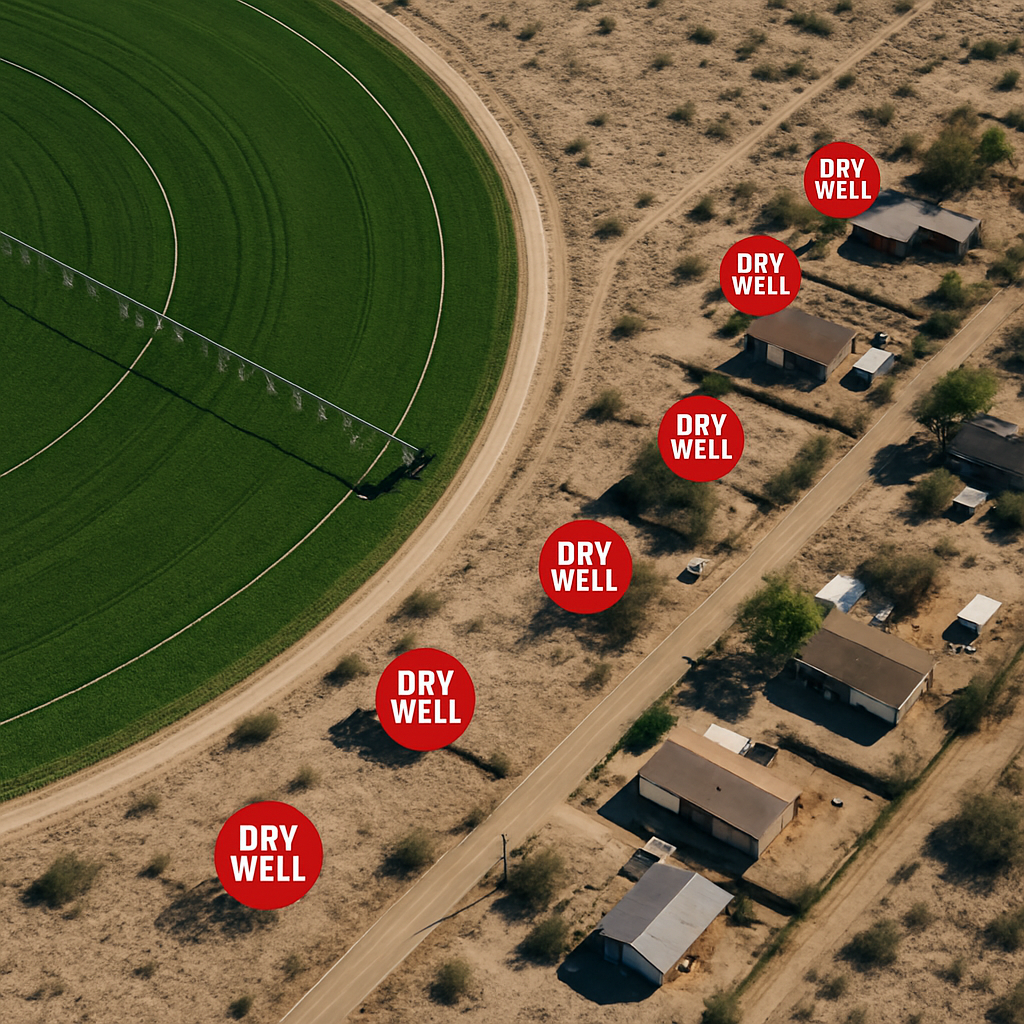
Section 5: The Disappearing Commons
Water, once considered a public trust, is being rebranded as a private asset.
In Colorado, rural residents have protested large-scale well drilling by outside buyers — only to discover the transactions were legal and irreversible.
In Arizona, foreign-owned farms (including Saudi-backed Almarai) are pumping aquifers to grow hay for export, while nearby towns rely on bottled water trucked in weekly.
The public backlash is growing, but legislation lags. No federal law currently prohibits large-scale water rights consolidation. Some lawmakers have proposed a Water Sovereignty Act, but it has stalled under industry pressure.
Section 6: The Future — Tapped, Metered, and Monitored
Experts warn that if the current trend continues, water may become a fully privatized utility by 2030 — regulated like electricity, but owned by fewer than a dozen entities.
Some speculative scenarios include:
- Smart meters on rural wells that track and tax water use in real time.
- Futures markets where cities bid against each other for emergency water contracts.
- Corporate control over emergency reserves during wildfire season.
And the most chilling scenario: a national water shortage triggering federal emergency powers, where the government temporarily seizes privately held water for redistribution — igniting legal battles between states, investors, and Indigenous nations.
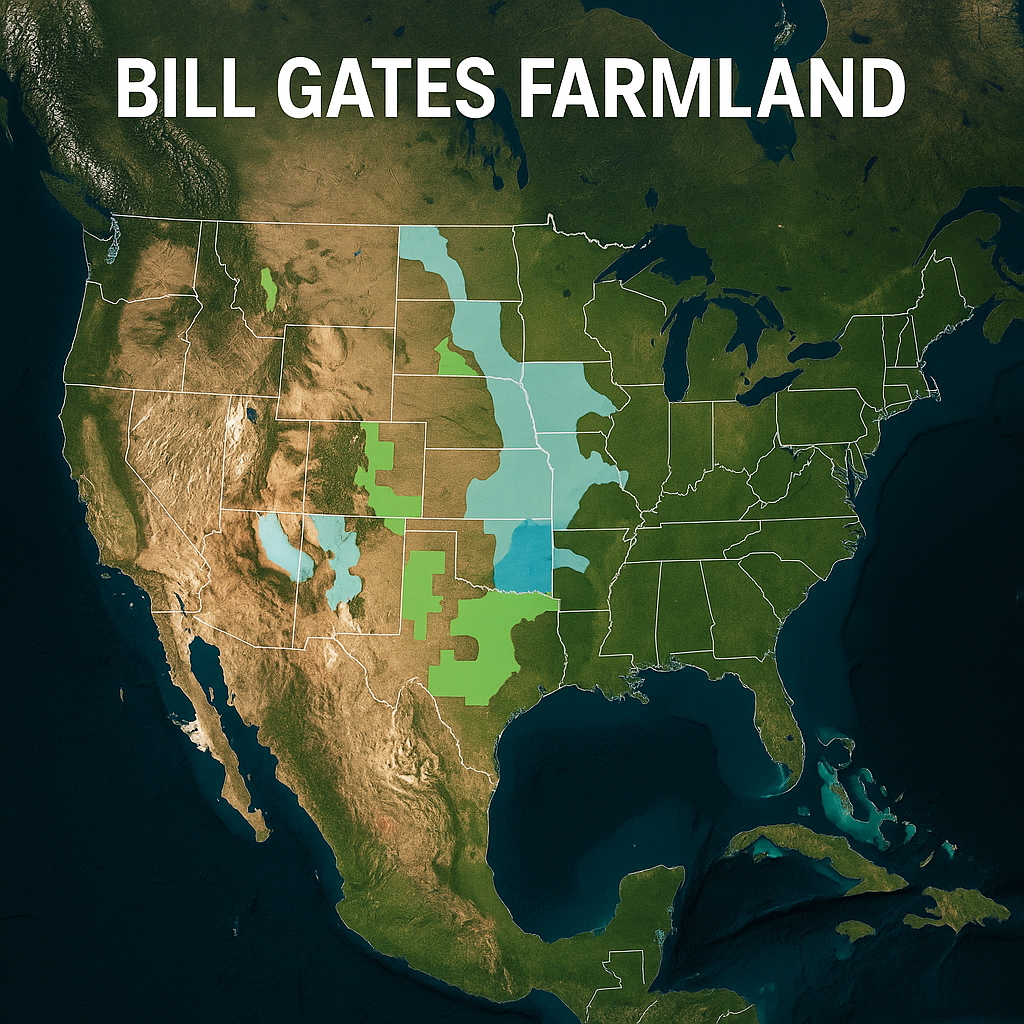
Section 7: Indigenous Rights and Water as Sovereignty
Not all water is for sale.
Indigenous communities, long marginalized in water allocation agreements, are now asserting treaty rights to water in the Colorado River Basin and beyond.
The Navajo Nation, whose lands have suffered chronic water access issues, recently won a partial Supreme Court decision affirming the federal government’s responsibility to protect its water access.
However, private buyers are increasingly targeting land around tribal borders, hoping to skirt legal protections or outbid smaller communities for access.
Water sovereignty — the idea that water is not a commodity but a sacred right — is gaining traction. But can it survive the market?
Section 8: Can the Tide Be Turned?
There are growing calls for reform:
- Public water trusts: Nonprofit or state-run entities buy water rights to keep them out of private hands.
- Aquifer recharge programs: Reinvestment in wetland restoration and flood capture to rebuild groundwater stores.
- Use-it-or-lose-it law reform: Ending outdated doctrines that encourage wasteful irrigation just to maintain legal claims.
- National water registry: A transparent database of who owns what, and where.
But the clock is ticking. Every dry summer accelerates the urgency. Every acre sold chips away at a future where water is a shared right.
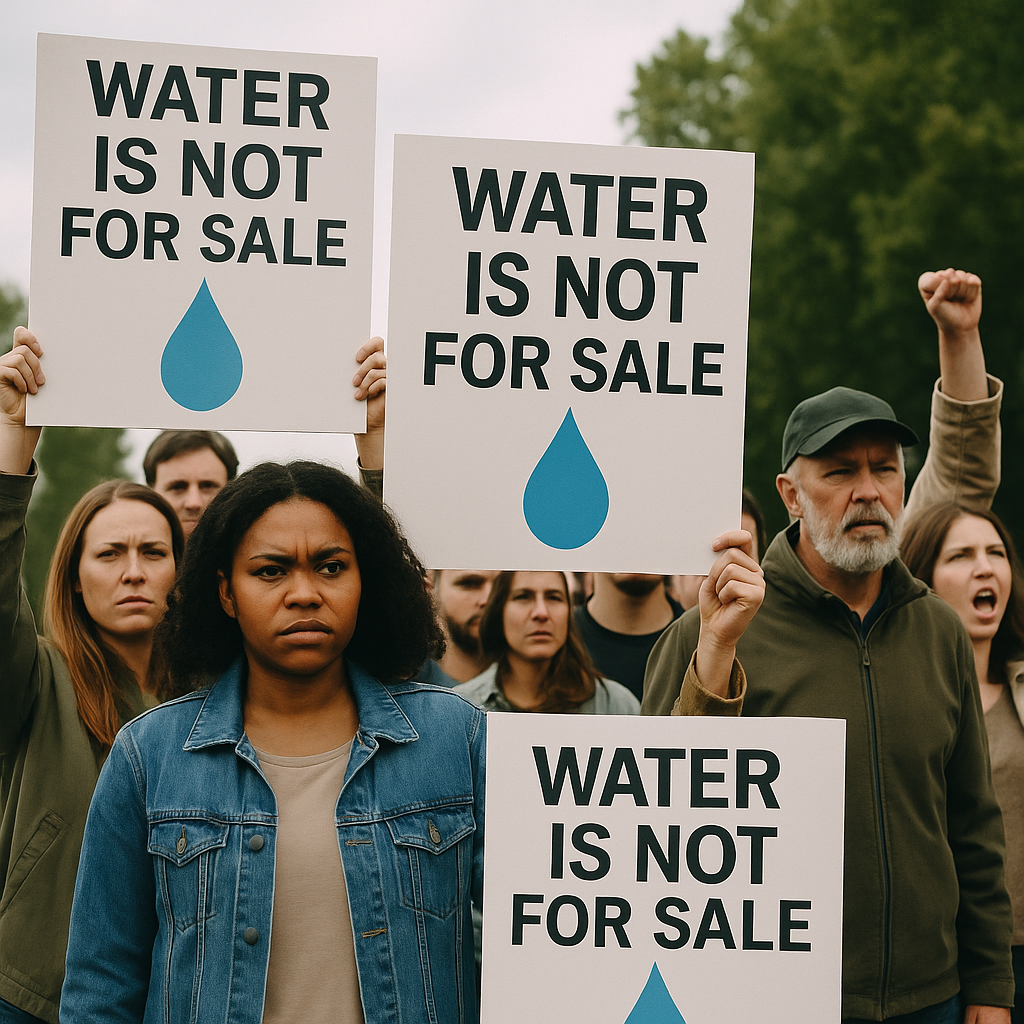
Who Will Own Tomorrow’s Water?
In 2025, it’s no longer a question of whether water is for sale. It is.
The real question is: who gets to own it — and who will pay the price?
As the U.S. slips deeper into drought and division, the quiet battle for groundwater could become the defining resource war of the 21st century. And by the time most Americans notice what’s missing from their taps, the deals will have already been signed — far underground, and far out of reach.
Source List (with URLs):
- USGS – Groundwater Decline
https://www.usgs.gov/special-topics/water-science-school/science/groundwater-decline-and-depletion - NASA GRACE Satellite Data
https://grace.jpl.nasa.gov/data/ - California DWR – Groundwater Management (SGMA)
https://water.ca.gov/Programs/Groundwater-Management/SGMA-Groundwater-Management - NOAA U.S. Drought Monitor
https://droughtmonitor.unl.edu/ - The Land Report – Bill Gates Farmland
https://www.landreport.com/2021/01/bill-gates-americas-top-farmland-owner/ - NYT – “Wall Street Eyes Billions in Colorado Water”
https://www.nytimes.com/2021/01/03/business/colorado-river-water-rights.html - Nuveen Farmland Investments
https://www.nuveen.com/global/about-us/responsible-investing/featured-insights/farmland-investing - Texas A&M – Rule of Capture
https://agrilifeextension.tamu.edu/library/water/the-rule-of-capture-and-groundwater-rights-in-texas/ - AZ Central – Saudi-Owned Farm Groundwater Ban
https://www.azcentral.com/story/news/local/arizona-environment/2023/08/04/arizona-cuts-off-saudi-owned-farm-from-pumping-groundwater/70513151007/ - CME – Nasdaq Veles Water Index (Water Futures)
https://www.cmegroup.com/markets/other/nqh2o.html - SCOTUSblog – Navajo Nation Water Rights Ruling
https://www.scotusblog.com/2023/06/supreme-court-sides-against-navajo-nation-in-water-rights-dispute/ - Food & Water Watch – Water Privatization
https://www.foodandwaterwatch.org/ - Pacific Institute – Water Markets & Equity
https://pacinst.org/publication/water-markets-equity/

